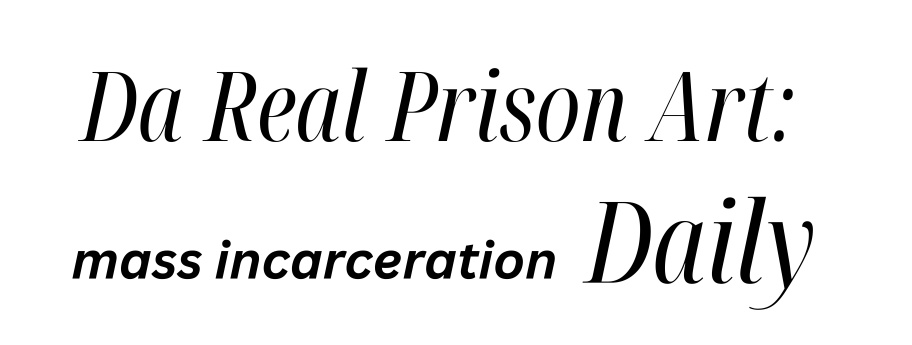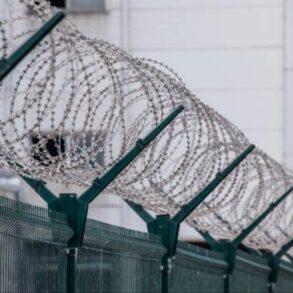What’s the context?
Census tallies of prison populations in the U.S. hurt underrepresented groups, advocates say, but things are changing
- Minnesota joins states recalculating prison populations
- Counts can lead to unequal representation: advocates
- Reforms impact minorities, indigenous populations
RICHMOND – Across the United States, many far-flung, rural communities have outsized political and economic clout due to the number of people counted as living there, even though many inhabitants are there unwillingly as prisoners in large remote jails.
But a growing number of states are moving to use the home addresses of incarcerated people – often in cities and urban areas – in their own population counts.
The growing push, advocates say, seeks to redress imbalances that result from populations being used to draw up the boundaries of legislative districts and sometimes helping to determine how much public funding an area receives.
It could also correct issues for some minorities who are under-represented politically, but over-represented in the prison population.
Christopher Blackwell is incarcerated in rural Mason County, Washington, but hails from Tacoma in Pierce County, one of the most populated places in the state. Blackwell said proper counting was vital for proper representation, especially when it comes to citizens being able to lobby the right people.
Washington, one of about a dozen states that have worked to end what critics call “prison gerrymandering,” moved to count people in state prisons at their home addresses in 2019.
“As we’ve worked on sentencing reform and bills and stuff like that from the inside out, now we have access to those legislators from where we’re from because we’re actually considered their constituent(s),” Blackwell said.
“Washington moving in that direction was very positive,” he said.
In May, Minnesota joined the ranks of more than a dozen states and more than 200 localities that have moved to end or restrict the practice.
Starting after the once-every-10-years U.S. Census in 2030, the state aims to count prisoners at their home addresses, rather than at the address of the correctional facility where they are housed.
“You don’t have a choice of where you are when you’re in prison. And so, here’s an ability to at least show up in a place where you could actually be represented by your actual, local official,” said state Representative Esther Agbaje, who helped spearhead the new law.
“We’re glad to be part of showing the way to other states that this is also something that they can do,” she said.

The holding cells of the East Baton Rouge Parish Prison are seen in Baton Rouge, Louisiana March 5, 2018. REUTERS/Shannon Stapleton
The holding cells of the East Baton Rouge Parish Prison are seen in Baton Rouge, Louisiana March 5, 2018. REUTERS/Shannon Stapleton
Half of U.S.
In addition to states, localities across the country have also moved to make changes – including some of the very areas that would theoretically stand to lose out economically or politically from a sudden drop in population.
The Prison Policy Initiative (PPI), which has closely tracked and worked on the issue for decades, estimates that roughly half of the U.S. population now lives in a city, county, or state that has moved to end or restrict prison gerrymandering.
But when counting the country’s population, the U.S. Census Bureau still uses a “usual residence” rule – essentially, people are counted where they live and sleep most of the time.
That means the bureau generally counts incarcerated people at the correctional facility where they are held.
However, that system is misguided, said Mike Wessler, PPI’s communications director.
“It kind of ignores some of the truths about incarceration – people move frequently and people aren’t incarcerated for that long (of a) period of time, most of the time,” Wessler said.
“A lot of time they’re there just for a handful of days. And if they happen to be there for the wrong days, they’re counted in the wrong place for 10 years.”
Such counts can distort a state legislative district by between 8% to 12%, which can effectively translate to 90 people having the same amount of political clout in one district as 100 do in another district, Wessler said.
And the practice can have a disproportionate effect on minority populations. Black people comprise about 14% of the U.S. population, but more than a third of the U.S. prison and jail population, PPI has found.

Inmates workout in the yard at Corcoran State Prison,
California October 1, 2013. REUTERS/Robert Galbraith
Inmates workout in the yard at Corcoran State Prison,
California October 1, 2013. REUTERS/Robert Galbraith
‘Wanted to do the right thing’
In Montana, a conservative-leaning state with many vast rural areas, lawmakers last year voted to end prison gerrymandering.
Montana State Senator Jason Small, a Republican whose district is home to two Native American reservations, said the old system could distort how indigenous populations were represented.
Native Americans make up about 7% of the state’s population, but at least 20% of the state prison population, research has found.
“It’s extremely disproportionate … those numbers really matter to the areas where they come from,” said Small, a member of the Northern Cheyenne Tribe.
U.S. Rep. Deborah Ross of North Carolina, whose congressional district includes Central Prison, which houses male death row prisoners, is spearheading federal legislation to try to make changes nationwide.
“I’m not fighting to have all the people in Central Prison be counted in my district,” she said. “I think it’s better for them and their families to be counted where they’re from.”
She recalled getting mail from people from Central Prison when she was a state legislator.
“And a lot of it was complaining about the system of justice in the place where they lived, which was not the place that I represented,” she said.
“Accountability for the criminal justice system in a lot of our local areas doesn’t make its way up the pipeline to somebody who might be able to do something about it who represents that area,” said Ross.
Critics of the burgeoning practice of counting incarcerated people at their home address say it could hurt localities where prisons are located if local governments end up losing money because of the ensuing lower populations.
But Wessler said population was just one of many factors that go into decisions about, for example, where and how to distribute public funds.
“People often worry that when you address prison gerrymandering it’s going to cost prison communities money, and it’s just not true,” he said.
While most of the dozen or so states to tackle the issue statewide are more traditionally Democratic-leaning, Small appeared open to the idea that other conservative-leaning states could follow suit after the action in Montana.
“I don’t know why they wouldn’t … other than an executive burden of tracking these people and making sure their numbers go to the right places,” he said. “I mean, I don’t understand what that hurts.”
He said when it came down to it, there really was not much of a battle over the issue in his state “because people sort of wanted to do the right thing.”
“I’ve passed some big, contentious shit and that thing wasn’t even a blip on the radar,” he said. “People knew there was an issue and we just fixed it.”
(Reported by David Sherfinski; Edited by Jon Hemming.)
This post was originally published on this site be sure to check out more of their content.





